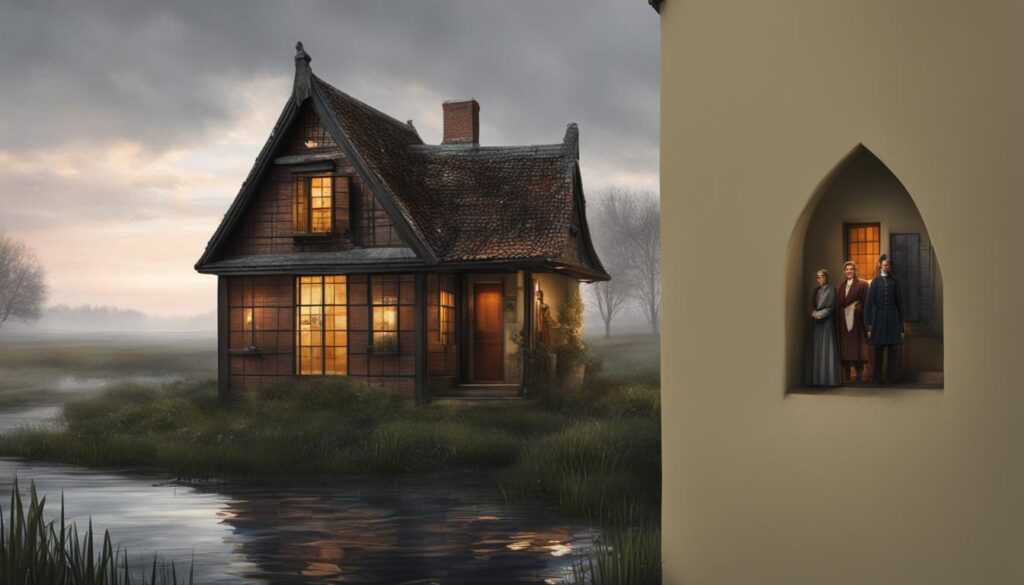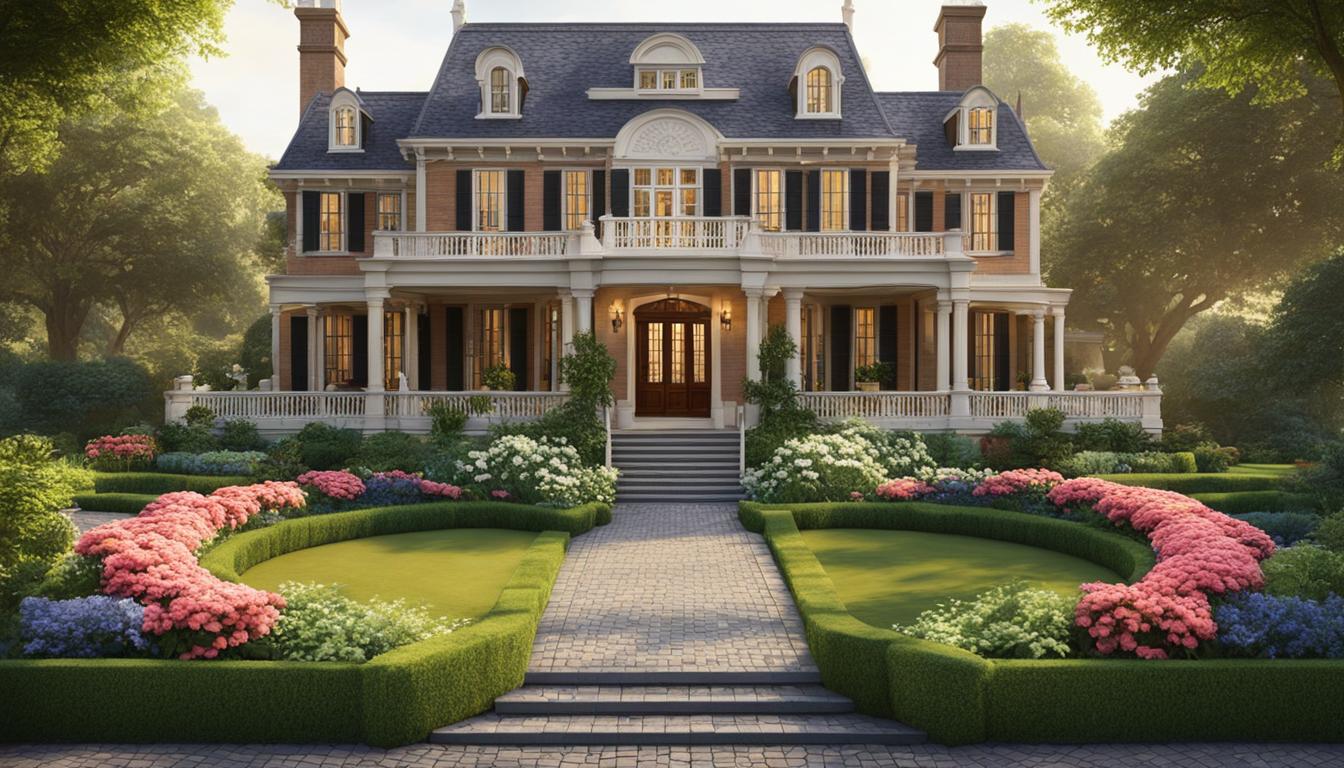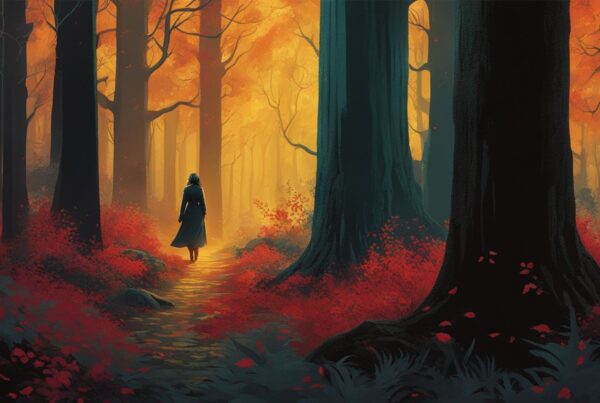Are you looking for a compelling audiobook that delves into family dynamics and the passage of time? Look no further than Ann Patchett’s “The Dutch House.” In this audiobook review, we explore the intricacies of sibling bonds and the enigmatic Dutch House through Patchett’s masterful storytelling.
With a captivating plot, complex characters, and thought-provoking themes, “The Dutch House” is a must-listen for anyone seeking a riveting and emotionally resonant story. Join us as we examine every aspect of this unforgettable novel in this comprehensive audiobook review.
Introduction to “The Dutch House”
Step into the world of “The Dutch House,” a novel written by Ann Patchett that has captured the hearts of readers worldwide. Set in the suburbs of Philadelphia, the book takes readers on a journey through the lives of two siblings – Danny and Maeve – and their bonds with the enigmatic Dutch House.
The novel explores themes of family, loss, and the passage of time, all while providing a thoughtful and emotionally resonant story. Patchett’s masterful storytelling transports readers to another world and immerses them in the lives of the characters.
Through rich descriptions and relatable characters, “The Dutch House” stands as a must-read for anyone seeking an engaging and thought-provoking audiobook.
Join us as we dive into the world of “The Dutch House” and explore the intricacies of this captivating novel.
Plot Summary
“The Dutch House” by Ann Patchett is a story about family ties, betrayal, and the power of the past. The novel follows siblings Danny and Maeve, who are forced to leave their beloved home, the Dutch House, after their father’s untimely death. The house is taken over by their stepmother, Andrea, and their lives are forever changed.
Despite losing their home and being separated, Danny and Maeve remain connected through their memories of the Dutch House and their shared experiences. Danny becomes a successful doctor but is haunted by the trauma of his past. Meanwhile, Maeve is driven by her desire to regain the home they lost.
Many years later, Danny and Maeve are reunited and are faced with the opportunity to reclaim their childhood home. They soon discover that nothing is as it seems, and their journey to reconnect with their past is not without challenges. In the end, the siblings must confront the secrets that have haunted them for decades and come to terms with the past in order to move forward.
Key Events in “The Dutch House”
| Chapter | Event |
|---|---|
| 1 | Danny and Maeve’s father dies, and Andrea becomes their stepmother. |
| 2-5 | Danny and Maeve’s life with Andrea, including their departure from the Dutch House. |
| 6-9 | Danny’s life as a doctor and his relationships. |
| 10-13 | Maeve’s life and her attempts to reclaim the Dutch House. |
| 14-16 | Danny and Maeve’s reunion and their journey to reclaim their home. |
| 17-22 | The resolution of Danny and Maeve’s story and the secrets that are uncovered. |
Character Analysis
In “The Dutch House,” Ann Patchett masterfully crafts complex and dynamic characters that contribute to the overall narrative in significant ways.
The protagonist, Danny Conroy, is a compelling and nuanced character whose experiences shape the story. As the son of a real estate mogul, he navigates the challenges of privilege and familial expectations while trying to understand his place in the world. His motivations are driven by a desire for belonging and acceptance, leading him down a path of self-discovery that is both empowering and heartbreaking.
Maeve, Danny’s older sister, is another pivotal character whose unwavering loyalty and love drive the narrative forward. Her fierce devotion to her brother and her ability to navigate life’s hardships with grace and resilience make her a character worth rooting for.
Other notable characters include Cyril Conroy, the siblings’ enigmatic and wealthy father, and Andrea Smith, Danny’s wife, whose unexpected presence adds another layer of complexity to the story.
Through the characters’ relationships and interactions, Patchett explores themes of family, loss, and the intricacies of the human psyche. She deftly handles each character with care and attention to detail, creating a rich and unforgettable reading experience.

Key Character Traits
| Character | Key Traits |
|---|---|
| Danny Conroy | privileged, introspective, resilient |
| Maeve Conroy | loyal, independent, compassionate |
| Cyril Conroy | enigmatic, wealthy, emotionally distant |
| Andrea Smith | ambitious, calculating, unpredictable |
Overall, “The Dutch House” boasts a rich cast of well-developed characters that contribute to a captivating and emotional read.
Themes Explored in “The Dutch House”
Ann Patchett’s “The Dutch House” explores various themes throughout the novel, blending intricate family relations with the passage of time. Here we examine some of the most thought-provoking themes in the story:
- Family Bonds: At the heart of the novel is the unbreakable bond between siblings Danny and Maeve Conroy, and the impact of their family history on their lives.
- Loss: The characters experience various losses throughout the story, including the loss of family, identity, and home.
- Passage of Time: The novel spans several decades, exploring the ripple effects of pivotal moments throughout the characters’ lives, ultimately highlighting the importance of making the most of the time we have.
These themes shape the story and provoke emotional resonance with readers, leaving a lasting impression beyond the pages of the book.
The Themes of “The Dutch House”
| Theme | Description |
|---|---|
| Family Bonds | The unbreakable bond between siblings Danny and Maeve, examining their relationship as a foundation of their lives. |
| Loss | The experience of losing family members and homes, reflecting on these losses’ impact on the characters’ lives. |
| Passage of Time | The importance of making the most of our time and the long-term effects of pivotal moments throughout the characters’ lives. |
Writing Style and Language
The distinct writing style and language used by Ann Patchett in “The Dutch House” sets the tone for this captivating novel. With carefully crafted prose, Patchett creates a rich and immersive world that draws readers in from the first page. Her attention to detail and use of vivid imagery brings the setting and characters to life, allowing readers to fully engage with the story.
Throughout the novel, Patchett’s writing style flows effortlessly, creating a seamless reading experience. She uses a variety of literary techniques, including flashbacks and shifting perspectives, to add depth and complexity to the narrative. The result is a compelling story that explores themes of family, memory, and the passage of time in a unique and thought-provoking way.
Whether you’re a seasoned reader or new to Patchett’s work, “The Dutch House” is sure to impress with its expertly crafted writing and engaging language.
Techniques Used in “The Dutch House”
| Technique | Description |
|---|---|
| Flashbacks | Used to reveal character backgrounds and motivations. |
| Shifting perspectives | Alternate narration between main characters for a more well-rounded story. |
| Vivid imagery | Used to bring the setting and characters to life. |
| Emphasis on family relationships | An overarching theme throughout the novel. |
Audiobook Narration
Experience “The Dutch House” in a new light with its audiobook narration. The audiobook is a fully immersive experience, with carefully chosen voice actors, sound effects, and adaptations that bring the story to life.
The narrator of “The Dutch House” is actor Tom Hanks, lending his distinctive voice to the character of Danny. His narration is masterful, giving depth and nuance to each character in the story. Through his voice, we can feel the emotions of the characters and the tension of the plot, creating an incredibly engaging experience.

The audio format adds layers to “The Dutch House,” making it a uniquely immersive experience. The sound effects used in the production of the audiobook add another dimension to the story, creating a more vivid and evocative atmosphere.
Overall, the audiobook of “The Dutch House” is an enthralling way to experience this captivating novel. Whether you are a fan of audiobooks or simply looking to try something new, this adaptation is a must-listen.
Critical Reception
The critical reception of “The Dutch House” has been overwhelmingly positive. The novel has received praise from literary critics and readers alike for its compelling plot, well-crafted characters, and exploration of thought-provoking themes.
Writing for The New York Times, Leah Hager Cohen called “The Dutch House” a “pleasure to read” and praised Ann Patchett’s ability to “weave intricate family tales.” Similarly, Ron Charles of The Washington Post lauded the novel’s “finely observed characters” and “gripping plot.”
On Goodreads, “The Dutch House” has an average rating of 4.2 out of 5 stars from over 100,000 ratings, demonstrating its popularity among readers. The audiobook narration, performed by Tom Hanks, has also received high praise for his performance and ability to bring the story to life.
Critical Reception Table
| Publication | Review |
|---|---|
| The New York Times | “A pleasure to read” and “intricate family tales” |
| The Washington Post | “Finely observed characters” and “gripping plot” |
| Goodreads | 4.2 out of 5 stars from over 100,000 ratings |
Comparisons to Other Ann Patchett Works
While “The Dutch House” stands out as a unique and compelling read, it has similarities and differences when compared to other works by Ann Patchett.
Similar Themes
Like “The Dutch House,” Patchett’s “Commonwealth” explores themes of family relationships and the passage of time. Both novels also touch upon the impact of childhood experiences on adult lives.
Additionally, “State of Wonder” and “The Dutch House” both delve into the idea of home and belonging, with the former centered around the Amazon rainforest and the latter around a grandiose estate in Pennsylvania.
Differences in Writing Style
While “The Dutch House” is characterized by its introspective and reflective first-person narration, Patchett’s “Bel Canto” adopts a third-person omniscient point of view. “Bel Canto” is also known for its lyrical and poetic writing style.
Similarly, “Truth & Beauty,” a memoir about Patchett’s friendship with writer Lucy Grealy, differs from “The Dutch House” in its non-fiction form and personal focus.
Character Development
| The Dutch House | Run |
|---|---|
| The novel follows the journey of siblings Danny and Maeve, exploring their relationship dynamics and personal growth. | In contrast, “Run” features a family consisting of a widowed father and his three adult children, who individually confront their unique struggles. |
| One of the novel’s central themes is Danny’s journey towards empathy and understanding for his father. | The characters in “Run” experience growth and development through confrontations with their past and present lives. |
Through analysis of various Ann Patchett works, it becomes evident that while they may share similarities in themes and tones, each novel presents a unique and distinct story for readers to enjoy.
The Legacy of “The Dutch House”
The impact of “The Dutch House” on contemporary literature has been significant. Ann Patchett’s exploration of family dynamics and the passage of time has resonated with readers, making it a beloved novel with a lasting legacy.
The Dutch House’s Impact on Literature
Since its release, “The Dutch House” has received critical acclaim and widespread recognition. The New York Times named it one of the 10 best books of 2019, and it was a finalist for the Pulitzer Prize in Fiction. The novel has undoubtedly made an indelible mark on the literary landscape.
Moreover, “The Dutch House” has continued to influence and captivate readers worldwide. Patchett’s impeccable writing style, rich storytelling, and nuanced character development are now widely recognized hallmarks of her work.
Reader Reception and Influence
“The Dutch House” has not only resonated with literary critics but has also found a place in readers’ hearts worldwide. Fans frequently cite the novel’s exploration of family, love, and loss as reasons for its impact and enduring popularity.
The Dutch House in Popular Culture
Given the book’s popularity, it is not surprising that “The Dutch House” has been the subject of adaptations and references in popular culture. Book clubs worldwide discuss the novel regularly, and the book has been featured prominently in literary festivals and author talks. Moreover, plans are currently underway to develop a film adaptation of the book.
Adaptations and Awards
Since its release, “The Dutch House” has received widespread critical acclaim and several nominations and awards. In 2019, the novel was named one of the New York Times 10 Best Books of the Year and was a finalist for the Pulitzer Prize in fiction.
In terms of adaptations, it was announced in 2020 that Apple TV+ had acquired the rights to turn the novel into a feature film. The film will be directed by George Clooney and produced by him and Grant Heslov under their Smokehouse Pictures banner. No release date has been set yet for the film adaptation.
While “The Dutch House” has yet to receive any major awards for its audiobook narration, it is worth noting that the audiobook is narrated by Tom Hanks, who brings his signature warmth and charm to the story. Hanks’ narration has been praised by reviewers and fans alike.
Awards and Nominations Received by “The Dutch House”
| Award | Category | Year | Outcome |
|---|---|---|---|
| New York Times 10 Best Books | Top 10 Books of the Year | 2019 | Won |
| Pulitzer Prize | Fiction | 2020 | Finalist |
Reader Feedback and Popular Opinion
Since its publication in 2019, “The Dutch House” has garnered widespread acclaim from literary critics and readers alike. The novel’s exploration of family ties, loss, and the passage of time has resonated with audiences, resulting in overwhelmingly positive reader feedback and popular opinion.
Book Review Blog
A book reviewer from the popular book review blog, BookPage, noted that “The Dutch House” is “an emotionally complex novel about the bond between two siblings and the place they called home.” The review praised Patchett’s writing style, stating that it is “compelling and emotionally resonant.”
Social Media Buzz
On social media platforms such as Twitter and Goodreads, “The Dutch House” has also generated significant buzz among readers. Many have praised the novel for its thought-provoking themes and well-crafted characters.
- “I can’t stop thinking about ‘The Dutch House’ by Ann Patchett. So beautifully written and emotionally powerful.” – Goodreads user
- “I just finished ‘The Dutch House’ and I am blown away. Patchett’s writing is exquisite and the story is captivating.” – Twitter user
Popular Book Club Pick
“The Dutch House” has also become a popular book club pick, with many groups eagerly discussing the novel’s themes and characters. The novel’s popularity has even led to the creation of virtual book clubs on platforms such as Zoom in order to facilitate discussions among readers.
| Discussion Topic | Opinions |
|---|---|
| Family Ties | “I loved the way the novel explores the complexities of familial relationships.” – Book club member |
| Analyzing the Characters | “I found all the characters incredibly interesting and was blown away by Patchett’s ability to develop them so well.” – Book club member |
| Writing Style | “I was completely entranced by Patchett’s writing style and am now eager to read more of her works.” – Book club member |
Discussion Questions and Book Club Suggestions
Engage in thoughtful discussions with our curated list of discussion questions and book club suggestions for “The Dutch House”. Use these prompts to explore the characters, themes and controversies in the book:
- The Dutch House unfolds over the span of several decades. How does this passage of time impact the story and the characters?
- The novel is primarily narrated by Danny, but we also get glimpses into the perspectives of other characters. How does this narrative style shape your understanding of the story?
- The house itself is almost a character in the book. What is the significance of the Dutch House and how does it relate to the larger themes of the novel?
- What role do money and class play in the story? How do they impact the lives of the characters?
- Discuss the relationship between Maeve and Danny. How does their bond evolve over time?
These suggestions can help elevate your book club meetings:
- Host a Dutch-themed feast, complete with Dutch delicacies such as poffertjes and stroopwafels
- Encourage attendees to bring a photograph or memento of a childhood home that holds significance to them, and discuss their memories and emotions associated with the place
- Have a reading of Dutch art, such as paintings by Van Gogh or Vermeer, and discuss how these works relate to the themes and style of “The Dutch House”
Recommended Reading for Fans of “The Dutch House”
After immersing yourself in the world of “The Dutch House,” you may be searching for other books that explore similar themes and offer the same level of literary excellence. Here are some recommendations:
| Book Title | Author | Similar Themes or Writing Style |
|---|---|---|
| Brideshead Revisited | Evelyn Waugh | Familial relationships, the passage of time, aristocracy, and a captivating sense of place. |
| Bel Canto | Ann Patchett | Exploration of the human psyche in times of crisis, complex relationships, and rich, descriptive language. |
| The Great Gatsby | F. Scott Fitzgerald | Familial conflict, social status, the passage of time, and a vivid, detailed setting. |
| The Corrections | Jonathan Franzen | Exploration of familial relationships, intimately detailed characters, and existential questions. |
Incorporating these novels into your reading list will allow you to continue exploring the themes and writing styles found in “The Dutch House” while discovering new and unique works of literature.
Conclusion
Without a doubt, “The Dutch House” by Ann Patchett is a literary masterpiece that explores complex family dynamics with eloquence and nuance. The novel’s well-developed characters and intricate plot keep readers engaged from start to finish, and the audiobook narration enhances the emotional resonance of the story.
Through its exploration of themes such as loss, regret, and the unbreakable bonds of family, “The Dutch House” offers readers a thought-provoking and emotionally resonant experience. Its critical reception and impact on readers have solidified its place as a contemporary classic in the literary world.
For those seeking to dive deeper into the themes explored in “The Dutch House,” our curated list of discussion questions and book club suggestions can foster meaningful conversations and exploration. Additionally, our recommended reading list offers suggestions for books that share the novel’s themes and engrossing storytelling.
Overall, “The Dutch House” is a must-read (or must-listen) for anyone who appreciates well-crafted stories that explore the intricacies of human relationships and the passage of time.
FAQ
What is “The Dutch House” about?
“The Dutch House” is a captivating novel by Ann Patchett that explores the intricacies of family dynamics and the passage of time. The story revolves around sibling bonds and the enigmatic Dutch House.
Can you give an introduction to “The Dutch House”?
Certainly! “The Dutch House” is a critically acclaimed novel written by Ann Patchett. It takes readers on a journey through the setting, characters, and overarching themes that make the book a compelling read.
What is the plot summary of “The Dutch House”?
The enthralling plot of “The Dutch House” unfolds through a comprehensive summary of key events and story arcs that occur throughout the novel.
Can you provide a character analysis for “The Dutch House”?
Absolutely! In our character analysis, we delve into the complex and well-developed characters of “The Dutch House.” Explore their motivations, relationships, and contributions to the overall narrative.
What themes are explored in “The Dutch House”?
“The Dutch House” delves into thought-provoking themes such as family bonds, loss, and the passage of time. Discover how these themes shape the story and resonate with readers.
How would you describe the writing style and language of “The Dutch House”?
Ann Patchett’s writing style and language in “The Dutch House” create a rich reading experience. Uncover the distinct prose that enhances the storytelling and adds depth to the narrative.
What can you tell us about the audiobook narration of “The Dutch House”?
Delve into the audiobook narration of “The Dutch House” and discover how the chosen narrator brings the story to life. Explore the nuances of the audio format and its impact on the overall experience.
How has “The Dutch House” been received critically?
“The Dutch House” has garnered attention from both literary experts and readers. Learn about the critical reception and reviews that reflect the impact and reception of the book in the literary world.
How does “The Dutch House” compare to other works by Ann Patchett?
Explore the similarities and differences between “The Dutch House” and other works by Ann Patchett. Discover the themes, writing style, and character development that set “The Dutch House” apart.
What is the legacy of “The Dutch House” in the literary landscape?
“The Dutch House” has left a lasting impact on readers and the contemporary literary landscape. Discuss its influence, reception, and the mark it has made among literature enthusiasts.
Have there been any adaptations of “The Dutch House”?
Learn about any adaptations of “The Dutch House” and the awards or nominations it has received. Discover how the story has transcended the pages of the book and made its mark in other formats.
What is the reader feedback and popular opinion about “The Dutch House”?
Explore reader feedback and popular opinion surrounding “The Dutch House.” Discover how the book has resonated with audiences and the impact it has made on individual readers.
Can you provide discussion questions and book club suggestions for “The Dutch House”?
Engage in thoughtful discussions using our curated list of discussion questions and book club suggestions for “The Dutch House.” Promote exploration of the novel’s themes and encourage meaningful conversations.
Are there any recommended readings for fans of “The Dutch House”?
Feed your craving for more engrossing reads similar to “The Dutch House” with our recommended reading list. Explore books that share similar themes, writing styles, or settings.



